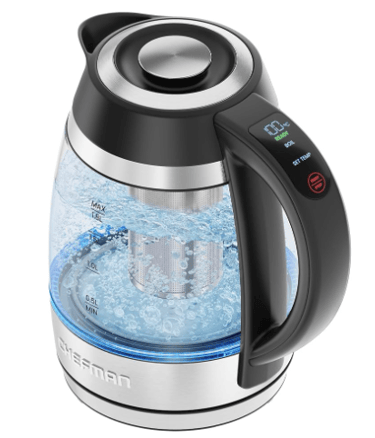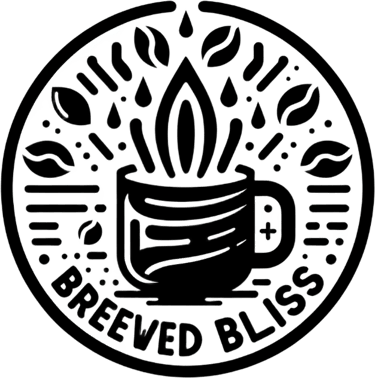Choosing the Right Kettle for Your Brewing Style
KETTLE GUIDE
10/7/20257 min read


Understanding Different Brewing Styles
When selecting a kettle for your coffee or tea, it is essential to understand that various brewing styles demand specific techniques and equipment. Each method, whether pour-over, French press, or cold brew, has unique characteristics that influence the necessary water temperature, brewing speed, and desired volume.
The pour-over brewing style is known for its ability to highlight complex flavor profiles. This method requires precision in water temperature, typically ranging from 195°F to 205°F. A kettle with a gooseneck spout is highly recommended for this technique, as it allows for better control over water flow and distribution, which can significantly affect the extraction of flavors.
In contrast, French press brewing entails steeping coarsely ground coffee in hot water for several minutes. While the water temperature can still adhere to the previous range, the primary consideration is the kettle's capacity to hold enough water for multiple servings. A straightforward stovetop kettle may be sufficient, but one with a built-in thermometer can ensure optimal steeping conditions, enhancing the overall brew quality.
Cold brew coffee, gaining popularity due to its smooth and low-acidity taste, involves steeping coffee grounds in cool water for an extended period. While temperature control is less crucial for this method, the kettle's capacity becomes vital, especially when preparing larger batches. Additionally, finding a kettle that can easily pour into large containers can streamline the brewing process.
Each brewing style has different characteristics, and exploring these will help you make informed decisions when choosing a kettle. By identifying your preferred brewing method, you can determine the features essential for your kettle—be it spout design, capacity, or temperature control—to elevate your brewing experience.
Key Features to Consider in a Kettle
When selecting a kettle for your brewing endeavors, several key features should be considered to ensure the optimal brewing experience. The choice of material is crucial; stainless steel kettles are known for their durability, heat retention, and resistance to rust and corrosion, making them a popular choice among brewers. Conversely, glass kettles offer a visual aesthetic that allows users to monitor the brewing process, but they may be more fragile and require careful handling.
Another significant factor is the heating method. Electric kettles provide the convenience of precise temperature adjustments and faster boiling times, which is particularly beneficial for teas and specialized coffee brewing methods that require specific temperature ranges. On the other hand, stovetop kettles offer versatility, as they can be used on various heat sources and often work well with traditional brewing styles. Depending on your brewing preferences, one heating method may suit you better than the other.
Capacity is also an essential consideration when choosing a kettle. For individual brewing, smaller kettles may suffice, while larger kettles will be more appropriate for group settings or batch brewing. The selected capacity should align with your typical brewing volume to avoid the need for multiple runs.
Temperature control capabilities play a pivotal role in achieving the desired brewing outcomes. Kettles equipped with precise temperature settings allow for consistent results across different brewing styles, especially for delicate teas or cold brews. An ergonomic design is equally important; easy-to-handle kettles with well-designed spouts can enhance the brewing experience by ensuring a steady pour without spilling.
In conclusion, understanding these key features and how they relate to your personal brewing style will aid in selecting the perfect kettle. Each feature contributes significantly to the overall quality of the brewing process, enhancing both flavor and user satisfaction.
Reviewing Popular Kettles for Different Brewing Styles
When selecting a kettle for brewing, it is essential to consider various styles of coffee or tea preparation. Different kettles come with features tailored to specific brewing techniques, ensuring both convenience and enhanced flavor extraction. Here we review several popular kettles categorized by brewing style, assessing their features, performance, and overall user satisfaction.
For pour-over enthusiasts, the Hario V60 Drip Kettle stands out. This kettle is designed with a precision spout that allows for controlled pouring, crucial for achieving the optimal extraction. Its stainless steel construction offers durability, while the ergonomic handle ensures comfortable use. Customers frequently commend its ability to maintain water temperature, making it a favorite among coffee aficionados who appreciate the pour-over method.
When it comes to French press brewing, the Secura Stainless Steel French Press Kettle is highly regarded. This kettle features double-wall insulation to keep water hot for an extended period, which is ideal for steeping coarsely ground coffee. Many users highlight the easy-to-read measurement markings inside the kettle, simplifying the brewing process. Its attractive design also adds elegance to any kitchen countertop.
For those interested in making tea, the Breville Electric Kettle is a versatile choice. This kettle comes with temperature control settings tailored for various types of tea, such as green, black, and herbal. Its quick boiling time and auto shut-off feature enhance ease of use. Customer reviews praise its sleek design and the ability to display water temperature, which is crucial for achieving the perfect brew. It caters well to tea lovers looking to experiment with different brewing styles.
Each of these kettles brings distinct advantages to their respective brewing methods, making them noteworthy options for both casual and serious brewers. Whether you're pouring over coffee, steeping with a French press, or brewing the perfect cup of tea, the right kettle can significantly influence your brewing experience.
Tips for Maintaining Your Brewing Kettle
Proper maintenance of your brewing kettle is essential for both performance and longevity. Regular cleaning is a fundamental aspect that should not be overlooked. After each brewing session, it is important to rinse out the kettle to remove any residue or debris. For a more thorough cleaning, especially after brewing darker beers or those with high sugar content, a gentle scrub using a non-abrasive sponge and mild detergent is recommended. Ensuring that all parts are rinsed thoroughly will help prevent any flavor contamination during future brews.
For kettles that utilize heating elements, descaling is another crucial maintenance procedure. Over time, mineral deposits can build up, impacting the efficiency of the kettle. To descale, a solution of equal parts water and white vinegar can be heated within the kettle. Allow it to simmer for approximately 15 to 30 minutes, then scrub any remaining deposits with a soft brush. It is advisable to follow this practice regularly, depending on your water's mineral content; some brewers may need to descale every few weeks, while others only need to do so every few months.
When it comes to storing your brewing kettle, ensure that it is completely dry before putting it away. Moisture can lead to mold or mildew, compromising the integrity of the kettle. Additionally, storing it in a cool, dry place will help avoid any potential damage from environmental factors. If your kettle features a lid or other removable parts, store them separately to prevent scratching or damaging the surfaces. Taking these simple steps can maintain your kettle's performance and increase its lifespan, ultimately enhancing your brewing experience.
One of our favorite kettles
CHEFMAN Electric Kettle for Boiling Water


Click 'Shop Now!' to find on Amazon now!...
📐 Specs (Typical / Key Features)
Capacity: 1.8 liters
Power / Wattage: 1500 W
Body Material: Borosilicate glass (transparent jug) with stainless steel accents
Safety Features: Auto shut-off, boil-dry protection
Lid / Opening: Removable lid for filling and cleaning
Filter: Stainless steel / mesh anti-scale filter
Base / Serving: Cordless design with 360° swivel base
Indicator / Lighting: LED light(s) during boiling
Handle: Cool-touch / heat-resistant handle
Extras: Drip-free spout, clear water-level markings
Pros & Cons
Pros
Fast Boiling Performance: Many users report it brings water to boil quickly (for its capacity).
Clear Design & Visibility: The glass body lets you see water level and boiling process, reducing guesswork.
Safe Operation: Auto shut-off and boil-dry features provide peace of mind in busy or shared environments.
Ease of Cleaning: Removable lid and filter simplify descaling and rinsing interiors.
Cordless Serving: The 360° base and lift-off kettle allow flexible placement and serving without manipulating cords.
Stylish Look: The glass + stainless aesthetic feels more premium than basic plastic models.
Good Capacity: 1.8 L is generous enough for multiple cups or small group use before needing a refill.
Cons
Glass Exterior Gets Hot: The transparent body can transmit heat; touching the sides may feel warm.
Fragility: As a glass model, it demands more careful handling to avoid cracks or breakage.
Weight When Full: With water inside, it becomes heavier to lift and pour — more challenging in tight spaces.
Lid & Opening Size: Some users note that the opening is not large enough to easily fit a hand or brush for deep cleaning.
Beep / Noise Alerts: Some report that the finish‑beep can be loud or somewhat jarring if you’re in a quiet environment.
Durability Concerns: A few users claim that over time, the base connector or certain components may wear or degrade.
My Review
In a small kitchen or dorm setting, this Chefman electric kettle impressed me. The visibility via glass is handy — you don’t have to guess how much water is inside or worry about overfilling. The fast boil performance (for a 1.8 L unit) means you don’t spend too much time waiting, which is perfect during rush mornings or in between study breaks.
The cordless design with swivel base is a subtle but important convenience — when space is tight, not having to deal with a fixed cord makes repositioning or serving easier. The safety features (auto shut-off, boil-dry protection) add confidence, especially in shared living environments where distractions are common.
The look also works in its favor. It doesn’t feel cheap; it elevates the visual of a countertop rather than just being utilitarian.
That said, in a very small dorm, it might feel a bit large when full — lifting a heavy jug around cramped counters can be a little awkward. Also, the glass body means more cautious handling is necessary — a slip or bump could cause damage. The finishing beep is noticeable, so if you have roommates sleeping early, that could be a downside unless you can mute it.
But overall? I think it's a compelling balance of capacity, speed, safety, and style. For anyone who wants more than a tiny one-cup kettle yet still needs to fit in tight quarters, this Chefman model is a solid option.
If you like, I can also pull together customer review highlights and real-world feedback, or compare this model vs a more compact kettle. Do you want me to do that?
